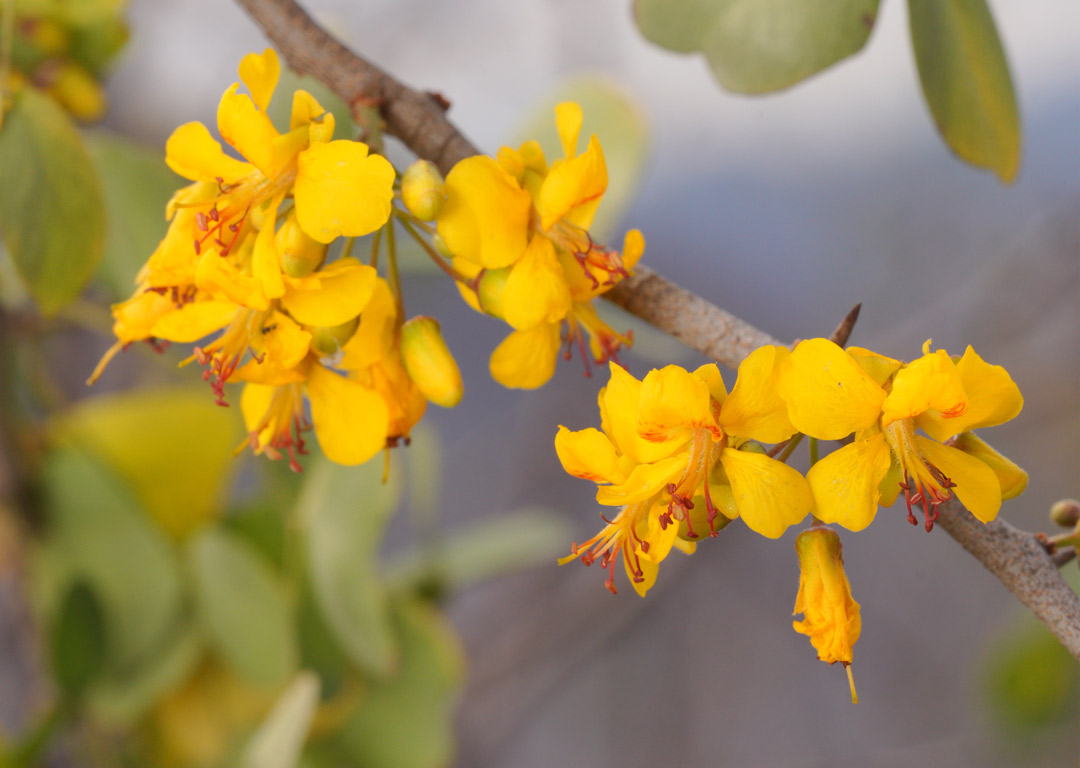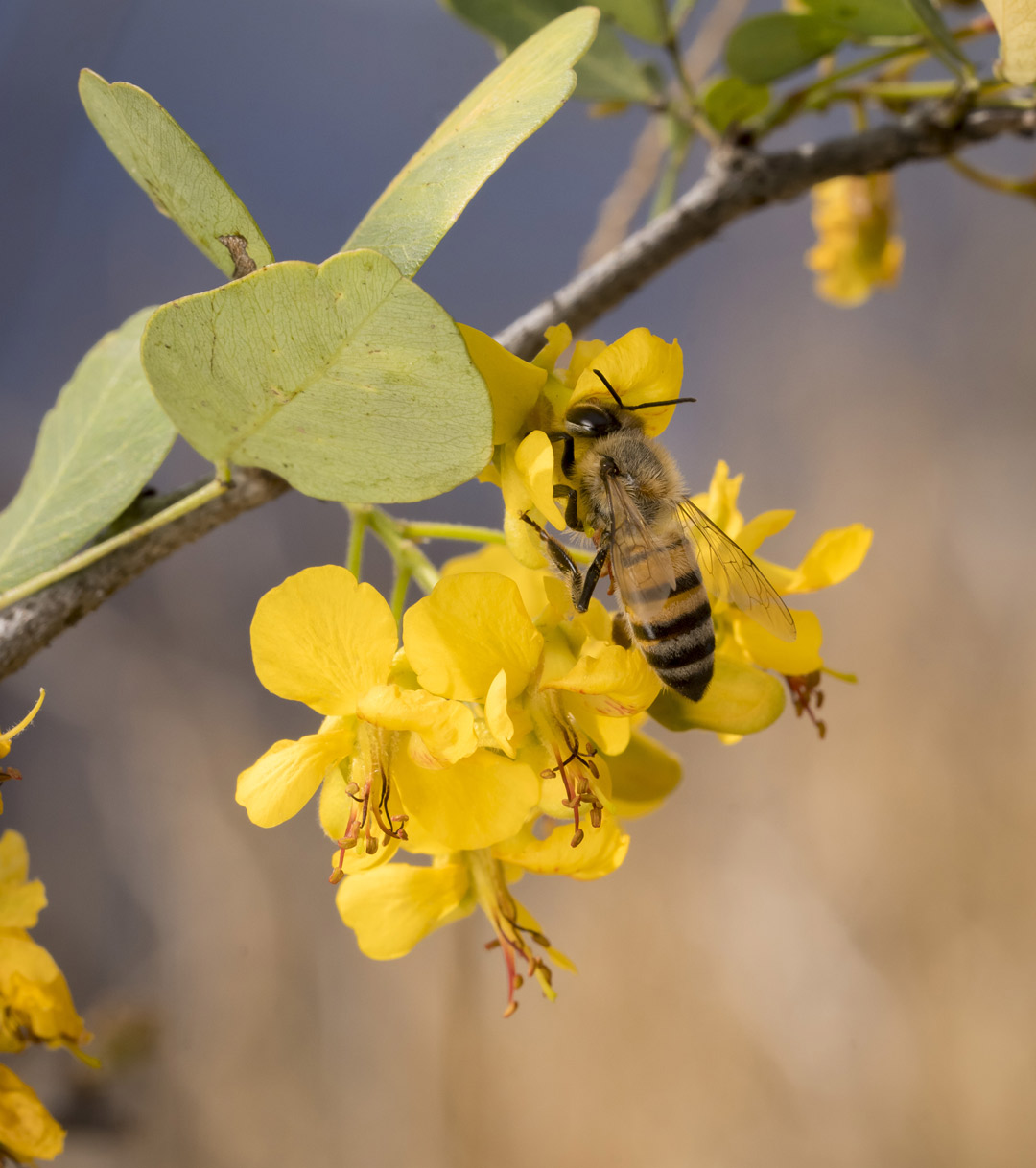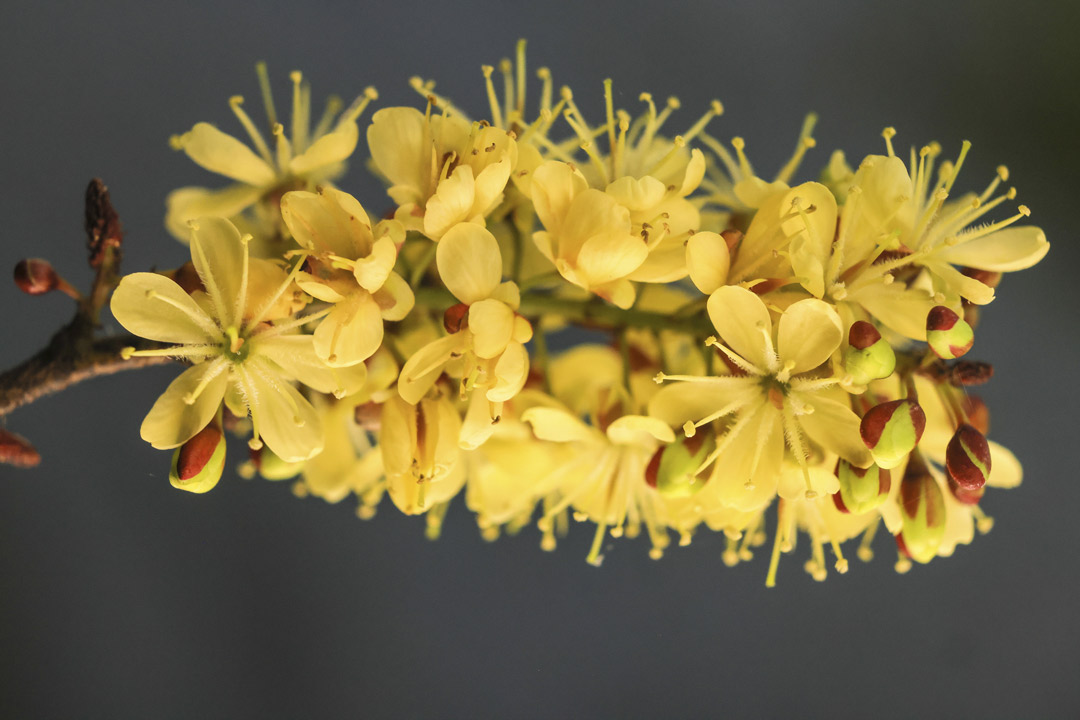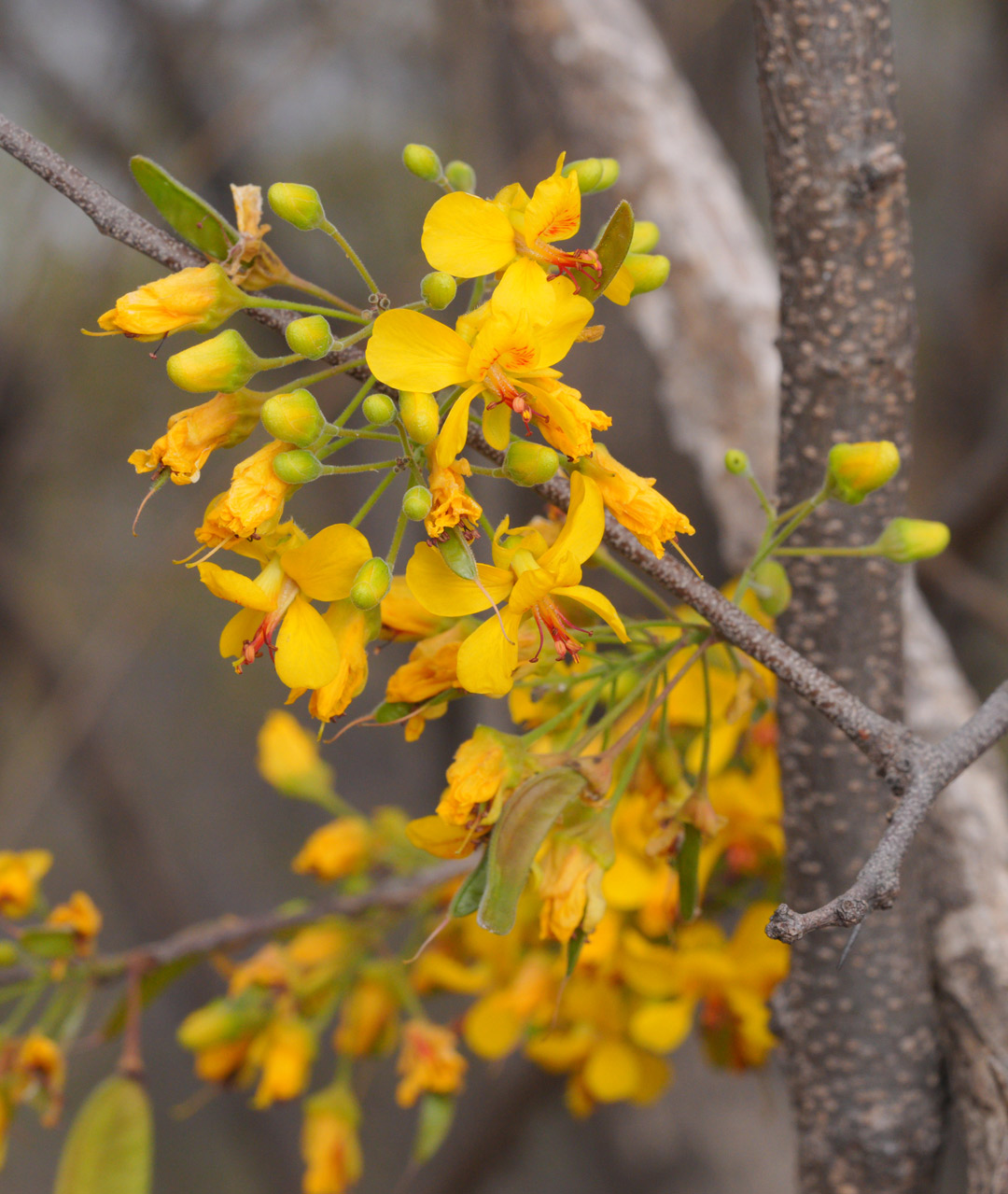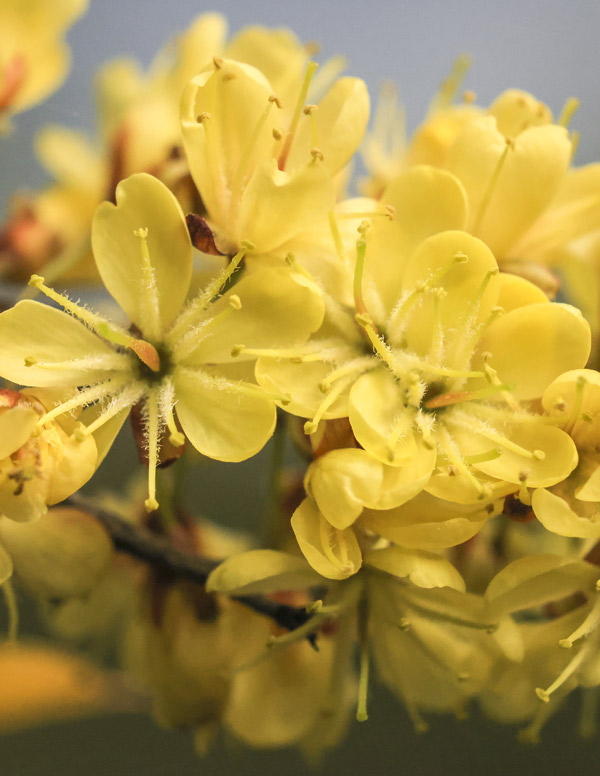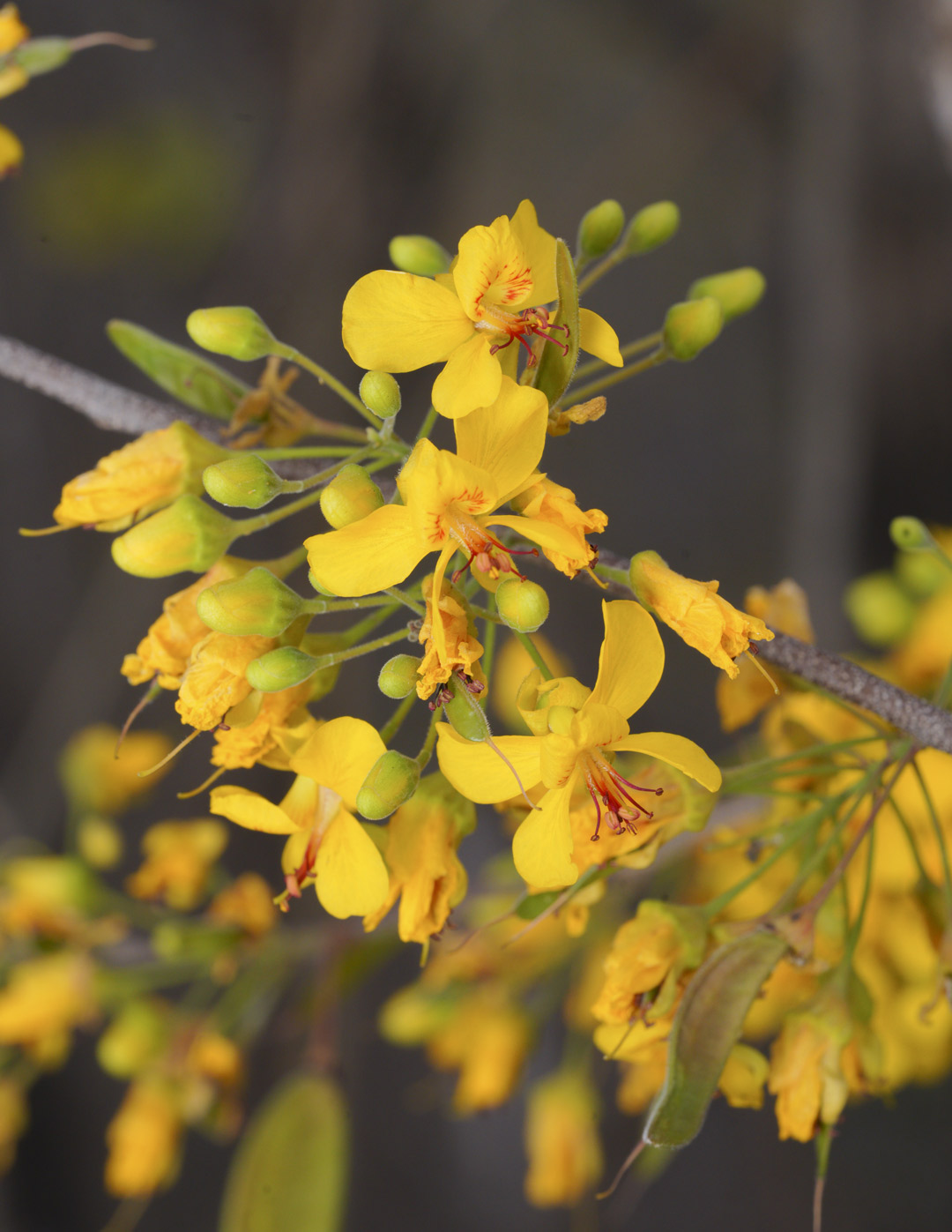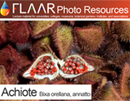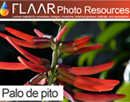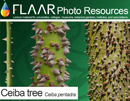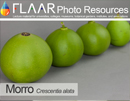When time and funding permit, each flower (each plant species) will have its own page, and its own PDF, and eventually its own PPT so that professors and students have plenty of material on Guatemala (and Honduras, etc) to study.
Heliconia adflexa, Coban, Guatemala, Hotel Monja Blanca, FLAAR, by Nicholas Hellmuth
This space is for flowers
we have recently found and photographed.
|
| Share
|
| Characteristics and differences of Haematoxylum campechianum L. and H. brasiletto Karsten |
The Haematoxylum L. genus includes trees and shrubs with conical thorns on the branches, pinnate leaves and inflorescences in racemes, solitary or fasciculate. this genus has only five species worldwide, four in tropical America (H. brasiletto, H. campechianum, H. sousanum and H. calakmulense) and one in Africa (H. dinteri) (Plasencia et al., 2017). Here we present two species: Haematoxylum campechianum and H. brasiletto. The word Haematoxylum derives from the Greek haima = blood, and xylon = wood, or bloodwood, making reference to its dark-red heartwood (the central, drier and more compact part of the trunk). The species name campechianum refers to its place of origin, the coastal city of Campeche on the Yucatan Peninsula in Mexico (Ortiz and Pina, 2018). And brasiletto, a geographical epithet, alludes to its location in Brazil (Pablo, 2018).
Description of Haematoxylum campechianum This species is a fast-growing ornamental tree that grows up to 45 feet high and 5 feet in diameter. Its pinnate leaves contain several pairs of reverse heart-shaped leaflets that vary in color and size. Yellow fragrant 5-petalled flowers with a white corolla appear throughout the year and generate a small fruit of low nutritional value (Ortiz and Pina, 2018). Its heartwood has a deep rich crimson color from where dye is extracted (see Uses). This species is native to the tropical region of the American continent and is distributed naturally in Guatemala, Belize and the Yucatan Peninsula in Mexico, in the states of Campeche, Yucatan and Quintana Roo (Plasencia et al., 2017). Throughout Central America, the Caribbean islands and northern South America, this species has been introduced and naturalized. This plant grows on deep clayey soils commonly known as lowlands, in which the flooded lowland forest known as Ak’alche in Mayan terminology develops. It can be found in high semi-evergreen forest, medium semi-deciduous forest, mangroves, or even growing on the banks of rivers (Plasencia et al., 2017). Taxonomy:
Description of Haematoxylum brasilettoThis plant is a small spiny tree of 2-12 m heigh with a twisted and fluted trunk with a brown grayish bark. Its branches have spines, bipinnate leaves of 5-8 cm lenght with 3 pairs of reverse heart-shaped leaflets. It presents yellow blossoms with five petals, slightly unequal in size and papery seed pods in a gray yellowish color (Tropic Essences, 2010). Taxonomy:
Uses of both speciesIn some studies, logwood is confused by some authors with Brazilwood because they have the same dye qualities (Plasencia et al., 2017). In H. brasiletto the main colorant is brazilin and in H. campechianum the main one is hematoxylin. Through oxidation, brazilin and hematoxylin are converted to the darker red compounds, brazilein and haematein, respectively (Bechtold and Mussak, 2009). Haematoxylum campechianumSince pre-Hispanic times, the Mayans used the dye of H. campechianum for their rituals, to paint the threads which the braided their hair, to dye their clothes black, and to paint their bodies and faces (Plasencia et al., 2017). After colonial times new uses were given to this plant including: to age bad wine, to write (mixed together with charcoal and iron salt) and it was known for its tonic and astringent properties to combat dysentery, diarrhea, intestinal parasites, and menstrual disorders (Plasencia et al., 2017; Ortiz and Pina, 2018). Nowadays it is also used for clinical analyses, medical uses, fence posts and coal production (Chable et al., 2019). The flowers of H. campechianum produce honey. Due to its colorful flowers, this tree is also planted in gardens and houses as an ornament. The wood also has medicinal properties, the infusion obtained when boiled in water is an astringent and its used as a remedy for diarrhea (Niembro, 2020). Haematoxylum brasilettoH. brasiletto has a dense orange-red heartwood and is the primary wood used for making violin bows and other small articles of turnery. The wood is also used to make furniture, crafts and construction of rural housing and firewood (Ávila and Rutiaga, 2014). In pre-Hispanic Mexico brazilwood was used to treat diarrhea and topically as a disinfectant for wounds and skin ulcers (Ortiz and Pina, 2018). Heartwood and bark extractables have different uses. The aqueous extract of the heartwood acts as an effective antibiotic and the alcoholic extract of the bark is an inhibitor of bacteria and yeasts. The methanolic extract of H. brasiletto has been proven to have strong activity against a panel of 12 bacteria. Some of them are described here. The antimicrobial effect of H. brasiletto has been tested against Escherichia coli and Staphylococcus aureus (Pablo, 2018). The heartwood is also used in traditional medicine to treat kidney disorders, heart and digestive problems, fever, mouth infections, diarrhea, wounds, bleeding, and cancer (Pablo, 2018). Some studies have proven that methanolic extracts of this species have an inhibition activity against Tripanozoma cruzi, the parasite that causes the Chagas disease (Molina et al., 2014). Some other research has shown that H. brasiletto extracts induce antiproliferative activity in human T-cell leukemia (Bello et al., 2021). Also, extracts of this species inhibit the growth of Streptococcus mutans, a microorganism implicated in dental caries (Rosas et al., 2012). Differences and similarities
Source: Niembro, 2020; Ortiz and Pina, 2018; Tucker and Kantz, 1997.
References Cited
Suggested Reading on
Haematoxylum campechianum
Suggested webpages with photos and information on Haematoxylum campechianum and H. brasiletto www.cabi.org/isc/datasheet/26332#toidentity www.naturalista.mx/taxa/280512-Haematoxylum-brasiletto www.gbif.org/es/species/2950907 https://biodiversidad.gt/portal/taxa/index.php?taxon=13694&clid=1
First posted March, 2022. |
Parque Nacional Yaxha, Nakum and Naranjo
Carnivorous Plants
Plants of Municipio de Livingston, Izabal
- Acrostichum danaeifolium, giant leather ferns
- Bellucia Pentamera
- Bibliography on Grias cauliflora
- Bibliography on Licania platypus
- Bibliography on Mangle negro (Avicennia germinans) L.
- Bibliography on Montriacardia arborescens
- Bibliography on Typha domingensis and Thypha latifolia
- Conocarpus erectus, white mangrove
- Edible Wetlands Plants, Hotel Tortugal
- Heliconia latispatha
- Heliconia wagneriana
- Manicaria saccifera Confra palm
- Neotropical trees of Guatemala need protection
- Nymphoides indica, waterlily flowers
- Pachira aquatica, zapoton
- Bibliography on Pithecellobium Mart., Neotropical trees of Mesoamerica
Ecosystems, Wetlands Aquatic Plants
Smartphone Camera Reviews
Bushes and small trees
Fungi and Lichens
Orchids
- Bibliography Bletia purpurea, aquatic orchid
- Bibliography, Epidendrum radicans
- Bibliography on Habenaria Orchids from Yaxha
- Bibliography, Lycaste virginalis var. alba.
- Bibliography, Macroclinium bicolor
- Bibliography, Prosthechea cochleata
- Bibliography Sobralia macrantha, Lirio de San Juan
- Bibliography, Sobralia xantholeuca
- Bibliography on Terrestrial shade orchids from Guatemala
- Bibliography on Terrestrial sunny orchids from Guatemala
Botanical Terms
Maya and Aztec flavorings for cacao, cocoa, chocolate
- Achiote, Bixa orellana
- Bibliography on Achiote, Bixa orellana
- Bibliography on Esquisúchil, Bourreria huanita
- Bourreria huanita
- Cassia grandis, bucut
- Chile Chocolate
- Chile Chocolate (Capsicum annuum var accuminatum)
- Chiranthodendron pentadactylon
- Cymbopetalum penduliflorum
- Guazuma ulmifolia
- Haematoxylum brasiletto
- Piper auritum, hoja santa
- Piper species
- Quararibea funebris
- Sterculia apetala, castaño
- Tagetes sp., Marigold
- Talauma, a variant of Magnolia
- Vanilla orchid
- Virola and nutmeg
Cacao, cocoa, chocolate
Consulting cacao & Theobroma species
Tobacco Ingredients of Aztec & Maya
Trees of Mesoamerica
- Bibliography on Acacia dolichostachya, Wild tamarind
- Bibliography, Bellucia costaricensis
- Bibliography, Bucida buceras
- Bibliography on Coccoloba belizensis Standl.
- Bibliography on Cojoba sp. and Cojoba arborea
- Bibliography, Ficus.
- Bibliography on Haematoxylum campechianum and H. brasiletto
- Bibliography on Hibiscus pernambucensis
- Bibliography on Ipomea murucoides
- Bibliography on Lacmellea standleyi, lechemiel
- Bibliography on Leucaena leucocephala
- Bibliography on mangle rojo (Rhizophora mangle)
- Bibliography on Manzanillo, Alseis yucatanensis Standl.
- Bibliography on Matilisguate, Tabebuia rosea
- Mangrove swamp Trees
- Bibliography on Ruagea insignis
- Bibliography on Pterocarpus officinalis
Bombacaceae, Bombacoideae
Tropical Fruits of the Maya
- Avocado Hass
- Bibliography on Coloc, Talisia floresii
- Bibliography, Dichogamy of avocado species
- Bibliography on Guayo, Talisia olivaeformis
- Bibliography on Laetia thamnia, Bakelac
- Bibliography on Maracuyá, Passiflora quadrangularis L.
- Bibliography on Punica granatum L., Granada
- Cashew
- Cuajilote, Parmentiera aculeata
- Granada
- Guanabas and Annonas
- Guava, Guayaba, Psidium guajava L
- Introduction to Papaya
- Nance a fruit of prehispanic Guatemala
- Passion flowers and fruits
- Passion flower, giant fruit
- Talisia floresii, Sapindaceae
- Carica Papaya Bibliography
Tropical Nuts
Spices, condiments, food coloring
Medicinal Plants
- Aristolochia, The largest flower in Guatemala, Bibliography
- Asclepias curassavica, bibliography
- Bibliography on Ciricote, Cordia dodecandra
- Bibliography on Contrahierba, Dorstenia contrajerva
- Bibliography on Falso hibisco, Malvaviscus arboreus
- Bibliography on Huele de noche, Cestrum nocturnum
- Bibliography on Lirio araña, Hymenocallis littoralis
- Bibliography on Roble Prieto, Ehretia tinifolia
- Bibliography, Tithonia diversifolia
- Canak
- Calliandra general info
- Guava, Guayaba
- Magnolia and Taluma
- Mayan medicinal plants
- Piper
- Tecomasuche, Coclospermum vitifolium
- Bibliography on Sufricay, Malmea depressa
- Bibliography on Wigandia urens
Underutilized edible plants
Edible Plants of the Mayan World
- Acacia, subin, bullhorn acacia
- Bibliography, Annona muricata
- Bibliography, Annona purpurea
- Bibliography, Annona reticulata
- Bibliography on Chipilín, Crotalaria longirostrata
- Bibliography on Chirimoya, Annona squamosa
- Bernoullia flammea
- Canna indica, tamale wrap
- Cuchamper, Gonolobus
- Guava, Guayaba
- Bibliography, Gonobolus sp.
- Bibliography, Parmentiera aculeata
- Pacaya palm Chamaedorea tepejilote
- Split leaf philodendron, Monstera deliciosa
Plants and trees used to produce incense
Utilitarian Plants
- Bibliography, Acacia farnesiana
- Bibliography on Aechmea bromeliifolia
- Bibliography on Agave americana
- Bibliography, native Agave species from Guatemala
- Bibliography on Anthurium crassinervium (Jacq.) Schott
- Bibliography on Balsa, Ochroma pyramidale
- Bibliography on Bamboo, Guadua longifolia (E.Fourn) R.W.Pohl
- Bibliography, Crescentia alata
- Bibliography, Crescentia cujete
- Bibliography on Hule, Castilla elastica
- Blepharidium guatemalense, irayol blanco
- Crescentia alata, Crescentia cujete
- Tecomasuche, Coclospermum vitifolium
- Bibliography on Coxte, Colubrina arborescens
- Bibliography on Madre cacao, Gliricidia sepium
- Bibliography on Tillandsia usneoides
















